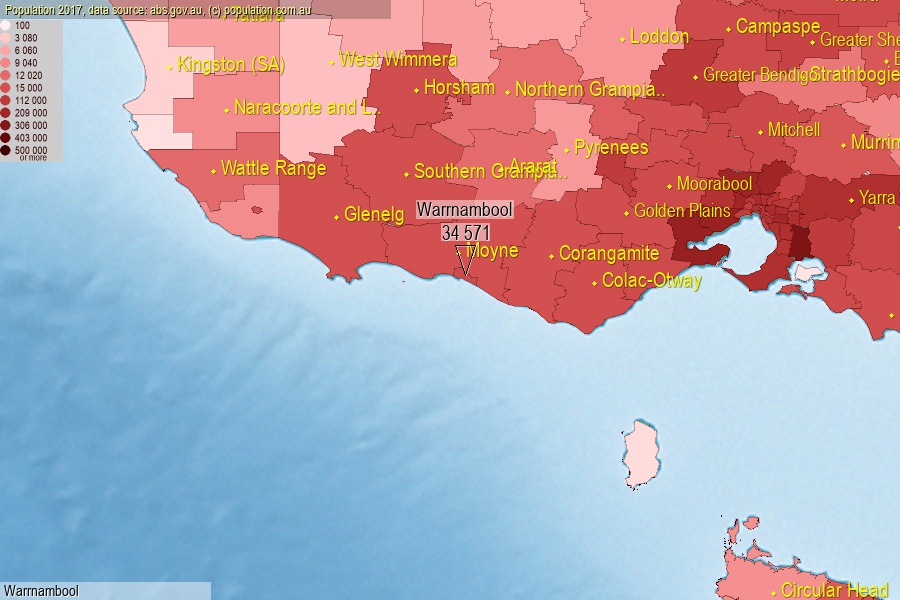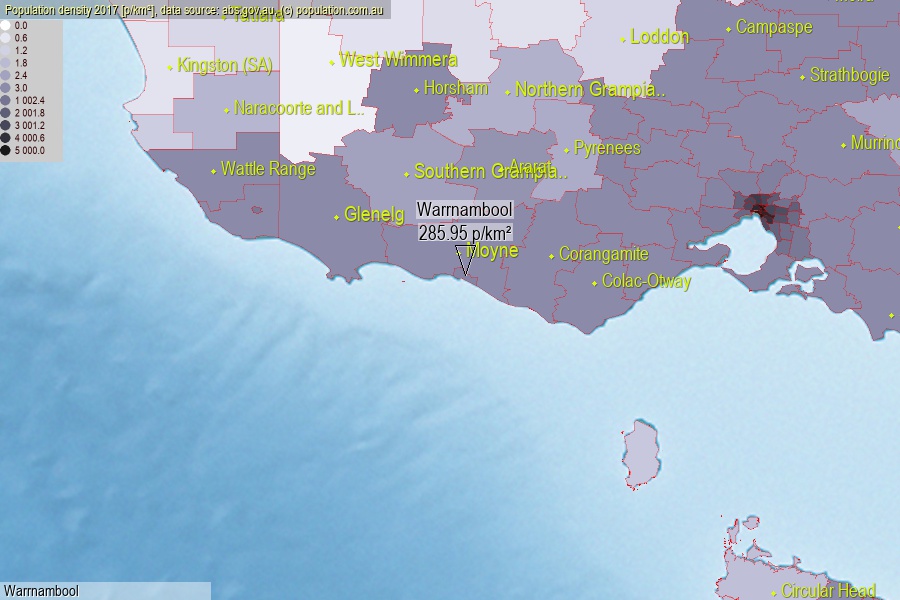 population.com.au
population.com.auLast official estimated population of Warrnambool City (as Local Government Area) was 34 571 people (on 2017-06-30)[2]. This was 0.14% of total Australian population and 0.538% of VIC population. Area of Warrnambool is 120.90 km², in this year population density was 285.95 p/km² . If population growth rate would be same as in period 2016-2017 (+0.96%/yr), Warrnambool population in 2025 would be 37 319. [0]



Click to enlarge. Warrnambool is located in the center of the images.
Population [people], population density [p./km²] and population change [%/year] [2]
[1996-2001] +1.29 %/Y
[2001-2002] +1.64 %/Y
[2002-2003] +1.15 %/Y
[2003-2004] +0.89 %/Y
[2004-2005] +0.95 %/Y
[2005-2006] +1.33 %/Y
[2006-2007] +1.36 %/Y
[2007-2008] +1.01 %/Y
[2008-2009] +1.07 %/Y
[2009-2010] +1.04 %/Y
[2010-2011] +0.92 %/Y
[2011-2012] +1.20 %/Y
[2012-2013] +1.10 %/Y
[2013-2014] +0.92 %/Y
[2014-2015] +0.82 %/Y
[2015-2016] +0.70 %/Y
[2016-2017] +0.96 %/Y
[0] Calculated with linear interpolation from officially estimated population
[1] Read more about LGA and Australian Statistical Geography Standard (ASGS) on abs.gov.au
[2] Population data from Australian Bureau of Statistics (Population and density: 2017; change: 2016-2017)
[3] Digital Boundaries: Australian Statistical Geography Standard (ASGS) 2016.